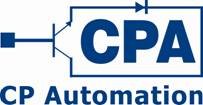According to the IEEE Guide on the Surge Environment in Low-Voltage (1000 V and Less) AC Power Circuits C62.41.1-2002, utility capacitor bank switching transients is an issue that exists in nearly every electrical system. Here, John Mitchell, global sales & marketing director at supply, installation and repair specialist CP Automation, offers an accessible introduction to this topic, and details why effective surge protection is the answer.
The application of utility capacitor banks has long been accepted as a necessary step in the efficient design of utility power systems. Generally, capacitor switching is considered a normal operation for a utility system and the transients associated with these operations, are largely not a problem for utility equipment.
However, this is not always the case. High voltage surges are normally covered by surge protectors. In contrast, traditional surge protection devices (SPDs) do not account for low level transient surges. These low level transient surges can be magnified in a customer facility, if the customer has low voltage power-factor correction capacitors, or can result in the nuisance tripping of power electronics-based devices, such as variable speed drives (VSDs), which are very susceptible to changes in power quality.
There are a number of transient-related concerns that are generally evaluated when transmission and distribution shunt capacitor banks are applied to the power system. One example of these many switching events that can cause transients on a utility system, is capacitor energising. Due to their regularity and impact on power system equipment, they often receive special attention.
Another example is distribution system overvoltages, resulting from the energisation of transmission system capacitor banks. These can be sufficient to spark over gapped SPDs — typically silicon-carbide (SiC) design. In comparison, gapless SPDs — typically metal oxide (MOV) design, should be capable of withstanding this event.
These transient switching overvoltages might simply damage low-energy SPDs or cause a nuisance trip of power electronics-based equipment. Nevertheless, case histories have been reported of complete failure of end-user equipment.
Other power quality symptoms related to utility capacitor switching include: customer equipment damage or failure, tripping of process equipment, SPD failure, and computer network problems — all of which are highly disruptive.
Similarly, capacitor switch restrike events can produce high-voltage surges that result in severe energy-duty for adjacent SPDs, or damage to unprotected equipment. It is therefore recommended to select a switching device that will minimise the possibility of a restrike event. In addition, it is advisable to protect adjacent equipment with SPDs of appropriate size.
Further application concerns often include:
• Overvoltages associated with normal capacitor energising
• Open line/cable end transient overvoltages
• Phase-to-phase transients at transformer terminations
• Voltage magnification at lower voltage capacitor banks
• Arrester duties during restrike events
• Current-limiting reactor requirements
• System frequency response and harmonic injection
• Impact on sensitive power electronics loads at customer facilities
• Ferroresonance and dynamic overvoltage conditions
While power quality issues can be caused by an unexpected event such as a lightning strike to the grid, issues relating to the threat of lower level transient surges can be and should be mitigated against.
To eliminate the effects of low-level switching transient events, transient protection systems such as SineTamer offer a new opportunity to protect valuable assets from the transient events that occur millions of times, every day. Its frequency attenuation network monitors the frequency, not just the voltage. The engineered transient disturbance filter is designed to monitor all 360 degrees of the sine wave, making it capable of detecting rapid changes in frequency.
Although this article is certainly not intending to be a comprehensive review of this topic, it provides strong evidence for the need to protect equipment from low level transient surges. Choosing the right SPD is therefore a crucial step and shouldn’t be ignored.
For further information see Sections B.2 to B.2.5 of the IEEE Guide on the Surge Environment in Low-Voltage (1000 V and Less) AC Power Circuits C62.41.1-2002. If you wish to discuss your SPD needs contact sales@cpaltd.net.




No comments:
Post a Comment